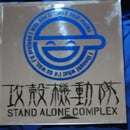Introduction: Blue DOOM Key - Memories From Childhood
Wolfenstein and Doom were my first PC video games, back in the Era of 486 and Pentium PC running DOS or Windows 95/98. And I've always wanted to design some kind of memento of my childhood. I happen to have some pretty awesome tools at my disposal, A full spectrum 5th Gen hobby laser and a portabee 3d printer. With these I've built in my eyes a pretty cool little reminder of one of my favorite childhood games.
Thanks to Planetdoom.gamespy.com and www.teamhellspawn.com for the Sprite images attached to this Instructable.
Step 1: Tools / Materials / and Software Required
Software Required
Solidworks
Coral Draw
Cura (a STL Slicer for 3d printers)
Pronterface (recommended print software for the portabee 3d printer)
Retina Engrave (Laser Cutter Control software)
Tools Required
3D Printer
Laser Cutter
Assorted Jewelers Files
Paint Brushes
Hot Glue Gun
Soldering Iron
Materials Required
Assorted Grit Sanding paper
Blue, Red, or Yellow 0603 SMD LED's
Wire Wrapping Wire
1/4 Acrylic
Assorted Paint
Primer
3D Printer Filament
Hot Glue
Super Glue
Solder
Step 2: Designing the Vector Image for Laser Cutting / Engraving
If you aren't interested in learning how I designed the vector image for my laser engraver skip this series of steps, and download the vector image attached.
A. Find the sprite your going to enlarge to base your design off of, and download it.
B. Open Coral Draw and Import the Sprite of the Doom key
C. Trace the outline, remember keep the size in mind you can only make it as big as your laser can cut / engrave
D. Add some Circuit for your laser to engrave out of the Acrylic
E. Remove the imported Doom Key Sprite
F. Now you are left with your Vector image for cutting / Engraving.
I have attached my Coral Draw file and SVG format of the Vector (in the zip file as it wouldn't let me upload the straight .SVG).
Attachments
Step 3: Designing the Base in SolidWorks
If you aren't interested in learning how to design simple objects in SolidWorks skip this series of steps and Download the STL file attached to this step. Also this series of steps is based upon how large you make your Acrylic key. I made my base just large enough for button cell batteries or an external power supply. If you plan to power it by AA batteries or AAA batteries you will need to design your base to be much larger. I also didn't mind using a hollow base without cover as this is a night light in my Living area so safely light a path to my washroom, and you cannot see in the bottom.
A. Open up solidworks
B. Start a new part
C. Switch to the Sketch tab and select the Corner Rectangle
D. Make a Rectangle for the overall size of the base
E. Make a second rectangle a little bit bigger than your Doom key
F. Switch to the features tab and select Extruded boss / base
G. Set how thick you want the top of the base and click the green check mark
H. Now make two more rectangles, these two rectangles will determine how thick your outer wall is
I. Again select the Extruded Boss / Base feature and select how tall you want the walls and press the green check marks
J. Save your object in STL format for the printer software
Attached is the STL file that I used for my base.
Attachments
Step 4: Using the Laser Engraver / Cutter (Full Spectrum)
My laser engraver has a RetinaEngrave driver board, which comes with the RetinaEngrave Software. This makes your laser work a lot like a printer.
A. Open your document in Coral Draw and Print it to the RetinaEngrave printer.
B. In Retina Engrave change your mode to Raster then vector.
C. Configure your power settings, for raster i went 100% power and 80% speed to make it nice and deep. For Vector I went 100% power and 20% speed as I know this is the proper setting for me to cut through 1/4 acrylic.
D. Put your acrylic into the printer, focus your lens and run your job!
E. Come back in about 10 minutes and your job should be done!
Sorry I forgot to take some photos without paint and frosting of the acrylic.
Step 5: Using the 3D Printer
I'm not using a Makerbot or any of the printers that can just use one software piece to print the object we created in Solidworks.
A. Open your STL file in Cura
B. As your Cura is likely already configured for your printer all you should have to do is click prepare print, this should spit out a .gcode file for pronterface.
C. Open pronterface and connect it to your printer, set your bed temp and head temp to your standard levels
D. With Pronterface open the .gcode file that cura made for you
E. Start the print job, come back in about an hour (or at least thats how long it took my printer)
Again I forgot to take photos of this, I had already completed about 90% of the project before I started this instructable.
Step 6: Prep and Paint
My 3D printer isn't the best, I have to do a lot of sanding.
A. Sand your 3D printed surfaces flat with a course sand paper, and slowly work your way up to fine sand paper
B. Wipe away all dust
C. Prime the 3D printed base
D. Let it dry and then sand again with 400 grit sand paper.
E. Paint it final color in two stages
To make the light show well in the acrylic you "frost" it. You can do this before you engrave / cut it, or you can do it after.
A. Using 200 grit or higher sand paper sand all clear surfaces on the acrylic
B. Then use 400 grit to make it look white like frost on windows during the winter.
C. Paint in the circuits don't bother priming this.
Step 7: Soldering, Assembly and Final Notes
This is the hardest part, soldering wire wrap wire to SMD LED's isn't very easy. In a former life I did a lot of soldering.
A. Super glue the SMD LED's all in the same direction to the bottom of the Doom key
B. Solder all of the LED's in parallel
C. Solder a 470 ohm resister between the positive rail and Anode
D. Solder the negative rail to the Cathode
E. Now Hot Glue the Acrylic into the base.
When you solder the LED's already super glued to the acrylic you will notice little cracks will form if the acrylic gets to hot.
This is a pretty easy project other than the soldering, I guess you could make all this by hand but I wanted to use my new power tools.

Participated in the
Game.Life 4 Contest

Participated in the
Full Spectrum Laser Contest















